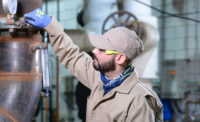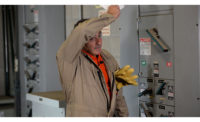Standard teaching techniques apply to all types of learning. But safety training exists on a level of its own given the life and death stakes involved. Unfortunately, while safety professionals need to find teaching ideas that work and keep working, many find themselves falling back on the same tired slide presentations.
Regina McMichael, president of The Learning Factory, said “The challenge our industry faces is that safety people weren’t educated to be training people. They’re experts in their technical capabilities, but they’ve had to train themselves in how to train others.”
The Big 3 and adult learning
Some people are auditory learners who learn by hearing things; some are visual learners who learn by seeing things; and some are tactile learners who learn by touching things – but regardless of which you’re better at, everyone learns more by doing combinations of the three. The least effective way to teach someone something is to deliver information via lecture or printed material (auditory or visual only). The most effective way is to have them learn something and then teach it to someone else (visual, auditory and tactile). Keep this simple concept in mind and you can add depth and dimension to almost any training technique you already have in your arsenal.
“The big issue is adult learning,” McMichael said. “Adults need to have training connected to their life experiences and relevant to the work they’re doing.” She cautioned that trainers often quote safety regulations but, “unless the law states that the employee must be able to recite a government reference, there’s no need to teach it.” Instead, trainers should consider, “What does your audience know? What do you need them to know? Only teach what’s between those two places.”
If you have to train something like a specific rule, McMichael suggested, “Instead of preaching what the regulation says, set up a working group where the learners break the regulation apart and then teach it to each other.”
Hands-on training for hands-on jobs
While gathering safety tips from safety managers on the job, much of the advice centers on training. One manager said he allowed his workers to understand their PPE by taking it apart and even testing its limits by trying to cut a cut-resistant glove and hitting a steel-toed boot with a hammer. The hands-on knowledge helped his people remember the importance of what they should be wearing.
Krista Barrett, talent development manager at a large, privately-held corporation, said that for safety training, it’s especially important to teach something and then immediately have participants do it. “Everyone hates the term role-playing, but that’s really the best way to get (information) to stick,” she said. Dayna Nota, a manager of training and development, agrees saying “Hands-on is always better, especially if people can actually do (a task) as they’re learning it.”
Another safety manager puts his own spin on role-playing by setting up a safety scavenger hunt in his facility and asking workers to play the role of a supervisor. He creates fake hazard setups through the plant and has everyone compete to see who can find them all. A prize drawing at the end sparks competition and makes the exercise more fun and memorable.
Tapping your resources
If you really want to get serious about training, McMichael suggests looking to the Board of Certified Safety Professionals. She said they have certifications you can earn like the CET (Certified Environmental Safety and Health Trainer), which teaches safety training design and delivery.
If you’re looking for faster ways to step up your training, it helps to tap the other resources you have on hand. Experienced workers have a wealth of knowledge from their time on the job and many are happy to share. One safety manager said he puts his new workers through all their traditional training and then follows up by assigning them a mentor. That person is responsible for showing the newbie how to apply their training on the job. And while this can be very effective, Nota cautions that it might be a good idea to assign more than one person. “If I’m learning from three different people,” she said, “I might understand one person better than another or click more with someone.”
Everyday training — making it stick
Unfortunately, all of your efforts may not give you the results you want if training only happens once or even once in a while. “Training is not a single event,” Nota said. “The reinforcement is the part that people often don’t do well.” She said it’s too common for workers to feel that they checked the “training” box on their to-do list, but then didn’t change their behavior. “You can have the best content, but if it’s not followed up on, it’s not going to take hold.”
The most obvious way to follow up after training is to talk to your workers. This can take the form of supervisors simply asking people questions like, “What seemed most important to you?” Nota suggests asking workers if they’re comfortable with what they learned and then watching them to make sure they’re doing things right.
Barrett agrees and said she teaches the S.O.S. method of follow up, which consists of Showing them exactly what they should do, Observing them on the job, and Shaping their behavior through kudos or correction. McMichael suggested that 5- to 7-minute micro-learning videos are a good way to teach and a good way to follow up as most workers are computer savvy. She suggests using your phone to record a worker performing an action according to safety regulations and using it as an example.
Some of the safety managers who shared tips had creative and fun ways to follow up. One kept a few ping pong balls with eyes drawn on them in his pocket as he walked the job floor. If he found anyone not wearing safety glasses, he’d “give them the eye” as a friendly reminder.
Another said his workers know they may get a safety pop quiz at any time — he might ask them to name five safety protocols and if they can, they get a T-shirt.
Still another created a program that required workers to turn in old PPE before they could get anything new. She said it gave her crib manager an opportunity to talk to workers about what gear worked for them and what didn’t, and whether they understood what gear they should be wearing.
Remember that if one training method or idea doesn’t connect with your workers, you can always try another. Keep at it until you find what works. Because you can always redo your training classes, but you can never unhave an accident!






